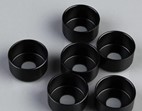The most understandable introduction of Finishing and Surface Treatment
Mechanical Finishing:
As machined:
This means no extra surface treatment after machining.
Stainless steel could resist corrosion in the air itself. Usually, no additional surface treatment is needed.
Aluminum could form a fine and close oxide layer itself, protecting against corrosion in the air. Sometimes ‘as machined’ surface is good enough.
In other cases where anti-corrosion and appearance requirement is not the main focus, the ‘as machined’ surface is the easiest choice.
Sand Blasting:
Sand Blasting uses compressed air as the power to form a high-speed jet beam to spray the abrasive material (quartz sand, emery, glass pellets, etc ) to the surface of the workpiece. Due to the impact and cutting effect of the abrasive on the surface of the workpiece, the surface can obtain a certain degree of cleanliness, and some roughness, so that the mechanical properties of the workpiece surface are improved. It improves the fatigue resistance of the workpiece. It also increases the workpiece’s total surface area and hence increases the adhesion of any further surface treatment’s effect (paint, plastic spray, etc).
The process can be used as the final finishing or as a pre-process before other surface treatments.
In a technical drawing, there is usually a number to mark the sand size used in this process, for instance, # 120 Sand Blasing. #120 here means the sand can pass the screen with 120 holes per square inch.
We use #120 sand as default.
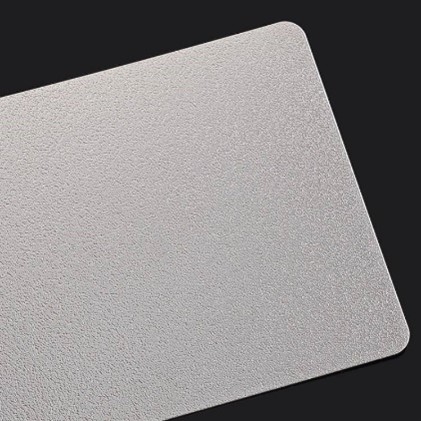
Brushing:
Use sandpaper or sand cloth to brush the surface of a metal part. It creates a kind of shallow linear array pattern on the surface. The primary purpose of this finishing is to cover light machine marks.
It can be used as the final finishing or as a pre-process before other surface treatments.
There is also a number to mark the sand size.
We use #100, and #120 most often.
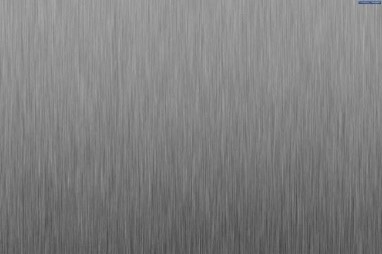
Tumbling:
A tumbling machine stirs a pile of abrasives (also known as tumbler media). The most common Tumbling is about 1 meter in diameter. Abrasives involve can be glass balls, stainless balls, or needles, or different kinds of stones. Abrasives come in different sizes and shapes, they could be balls, triangles, or irregular squares, with sizes ranging from a few mm to a few cm.
Tumbling also known as vibratory polishing is just a process that stirs the parts together with the tumbler media desired, sometimes also with some chemical agent for a more shining surface.
Depending on the media in choice, it creates a rather smooth surface, some shining some not. The primary purpose of this process is to create a unified surface looking for all parts and also breaking sharp edges.

Polishing:
This process aims to produce a very smooth and shiny surface. Any requirement for a surface roughness finner than Ra0.6 um may need polished. The most common method is just to brush the surface with sandpaper and later textile material, the media to brush the surface should be from coarse to fine, from hard to soft. A typical workflow is first to use sandpaper #120, then # 200 then slowly to #2000, and later burlap wheel, cloth wheel, and wool wheel.
The hard the workpiece is the easier to get a smoother surface.
Mechanical surface treatments change the surface outlook but do not give extra anti-corrosion protection. When we need some extra help to protect the parts from corrosion, we need chemical and electrochemistry surface treatment.
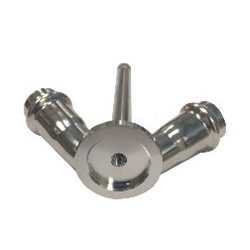
Chemical and electrochemistry surface treatment
Most chemical and electrochemistry surface treatments are aimed at producing some kind of dense metal oxide film or metal compound film on the metal surface. Some metals can naturally produce this film, such as nickel, and chromium. Electroplating and electroless plating take advantage of this characteristic to coat the surface of the workpiece with a layer of such kind of metal so that the dense film produced by it protects the workpiece from oxidation. The benefit of this protection is that if the oxide layer is slightly damaged, exposure to air Ni-Cr can regenerate the oxide layer, preventing further corrosion.
The oxide layer produced by the aluminum alloy in the air is not enough to meet the requirements of long-term corrosion resistance, so a certain chemical and electrochemical reaction is required to strengthen the oxide film, which is anodizing.
Another type of measure to prevent oxidation of the workpiece is to completely cover the surface of the workpiece with some other substance, thereby isolating the workpiece from contact with the air. Such as painting, plastic spraying, etc. The corrosion resistance of such measures depends on the properties and thickness of the substance covered by the workpiece.
Passivation:
Passivation of stainless steel:
Pickling stainless steel can remove part of the free iron on the surface of the workpiece, thereby increasing the chromium content of the surface. Chromium forms a dense oxide film on the workpiece surface. The protective film formed by higher chromium content is denser and harder, thus enhancing the corrosion resistance of stainless steel workpieces.
The main component of stainless steel passivation agents is nitric acid or citric acid. Depending on the composition of stainless steel, hydrofluoric acid, potassium chromate, and hydroxyl compounds are also doped.
The thickness of passivation film is very thin and has little effect on dimensions and tolerances.
Aluminum alloy passivation/Chromate conversion coating/Alodine:
Aluminum alloy passivation mainly uses a chromate solution to produce a chromate conversion coating on the surface of the workpiece. The process is also known as Chromate conversion coating, Alodine, and Chem film. In the early days, hexavalent chromate was mostly used. Due to its high toxicity, it has been eliminated in modern times and replaced by trivalent chromate. The passivation layer is thin, which basically does not affect the size and tolerance, and does not affect the conductivity of the aluminum alloy. However, the corrosion resistance and oxidation resistance are not as good as that of the anodizing process.
The chromate conversion layer increases the adhesion of the workpiece to other coatings, so this process is also used for pre-treatment when painting.
Electroplating:
Using the principle of electrolysis, the substrate is placed in the cathode and connected to the negative electrode of the DC current, and the plated metal is connected to the anode, and the positive electrode. After electrification, an electrolytic reaction occurs through an electrolyte containing plated metal ions, and the surface of the cathode is covered with a layer of plated metal.
The primary purposes of electroplating are anti-corrosion, better appearance, wear resistance, increase hardness, and so on.
Copper plating: used as a primer to improve the adhesion of the electroplating layer.
Nickel plating: used as a primer or for appearance, to improve corrosion resistance and wear resistance.
Chrome Plating: Improves corrosion resistance and increases surface hardness.
Gold plating: improve electrical conductivity and wear resistance.
Silver Plating: Improves electrical conductivity.
Galvanized: Primer or anti-corrosion.
Due to the irregular shape of the workpiece, the current density of each part of the workpiece is not exactly the same. At the same time, the flow of the electrolyte will also be uneven due to the shape of the workpiece. Therefore, the coating thickness of each part of the workpiece will be different. Most electroplating processes will have an impact on the workpiece size, which can adversely affect tolerances due to uneven coating thickness.
Electroless plating:
Electroless plating is a method that does not require electricity, and according to the principle of a redox reaction, uses a strong reducing agent in a solution containing metal ions to reduce metal ions into metals and deposit them on the surface of various materials to form dense coatings.
For example: put iron into a copper sulfate solution, and the surface of the iron is a layer of copper attached. Of course, because of the need to consider the adhesion of the coating, product consistency, cost, and other factors in industrial production, the composition of the solution used in electroless plating is much more complicated. In addition to the compound or complex solution of the coating metal, it also contains various additives such as buffers, accelerators, and stabilizers. But the basic principles are the same.
The cost of electroless plating is much higher than electroplating. The thickness of the coating is much easier to control than electroplating. When the shape of the workpiece is complex, there are still some areas where the thickness of the coating is not uniform due to the limited flow of the plating solution. But overall, tolerance control of electroless-plated workpieces is much easier than electroplating.
Electroless plating is suitable for nickel plating, silver plating, copper plating, etc. on cast iron, carbon steel, copper alloy, aluminum alloy, stainless steel, and other substrates.
Chemical Polishing:
When the metal is immersed in the acid solution, the uneven parts of the metal surface are etched faster than the smooth parts due to the larger contact area. The industry uses this phenomenon to improve the roughness (make it less rough) of the workpiece surface, which is chemical polishing. Chemical polishing mainly applies to stainless steel, copper, and copper alloys. Chemical polishing has a good polishing effect on steel parts, especially low-carbon steel, so chemical polishing can be used for some steel parts that are difficult to polish mechanically.
Since the polishing liquid needs to destroy the protective film naturally formed on the metal surface first, its main components are a mixture of acids such as sulfuric acid, nitric acid, hydrochloric acid, phosphoric acid, and hydrofluoric acid. Chemical polishing can be used alone to increase the surface finish of the workpiece, or as an intermediate step in other surface, treatments to improve the brightness of the final product. For example, in the process of anodizing aluminum alloy, chemical polishing as an intermediate step helps to make a shiny final product.
Blackening / Black Oxide:
Generally used for carbon steel.
After alkaline washing and pickling to remove grease and blurs, heat and soak in a passivation solution. The passivation solution is usually a mixture of sodium carbonate, sodium nitrate, alkaline, and sodium hydroxide. After the chemical reaction, a dense protective layer of ferric oxide is formed on the surface of carbon steel, and the protective layer has a black luster.
Hence the name ‘blackening’. This process has improved the anti-rust function of carbon steel, but it is far less effective than electroplating processes such as zinc plating and nickel plating. In an environment with relatively high temperature and humidity, the blackened workpiece still has a chance to rust. The oxide film formed by this process is extremely thin, and its influence on the workpiece tolerance can be completely ignored.
The blackening process is also occasionally used for stainless steel. Generally, the purpose is to pursue the color change of the surface, which has little help for the anti-corrosion performance of stainless steel.
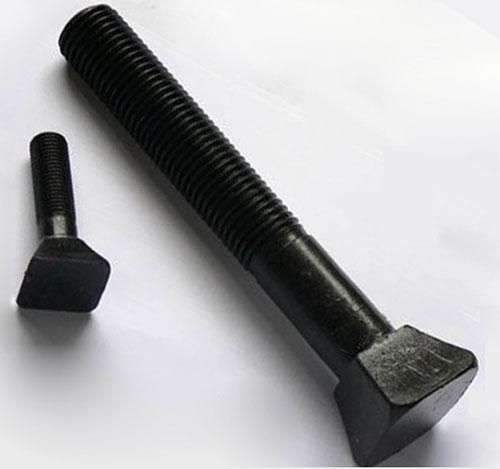
Anodizing:
Anodizing can be used for the surface treatment of aluminum alloys and titanium alloys.
Anodizing of aluminum alloys is the most common and successful surface treatment of aluminum alloys. Aluminum and its alloys are placed in a corresponding electrolyte (such as sulfuric acid, chromic acid, oxalic acid, etc.) as an anode, and electrolysis is carried out under specific conditions and the action of an applied current. The aluminum of the anode or its alloy is oxidized, and a thin layer of aluminum oxide is formed on the surface.
The thickness of the alumina layer is related to voltage, current, the concentration of electrolytes, temperature, reaction time, and so on. This process creates a porous structure that can be dyed with a dye and then closed off. Thereby obtaining final products of different colors. The gloss of the final product can also be increased by chemical polishing during pretreatment, or by lye, treatment to obtain a uniform matt surface.
Type II Anodizing:
That is the type of anodizing that aluminum alloy anodic oxidation generally refers to. Also known as color anodizing It applies a relatively high temperature of the electrolyte, a high concentration, a low voltage, and a low current intensity, and the obtained oxide film is thin, generally below 15um. Non-conductive, good anti-corrosion. The surface anti-wear performance has been improved. If the time of pretreatment is strictly controlled, a higher tolerance final product can be obtained.
Type III Anodizing:
It is also known as hard coat anodizing, the electrolyte temperature is lower, the concentration is lower, the voltage and current intensity are higher, and the thickness of the obtained oxide film is thicker, greater than 15um. High surface hardness, >300HV. Non-conductive, excellent anti-corrosion, some hard coat anodized aluminum alloys can withstand more than 30 days of salt fog test. Due to the high film thickness (up to 250um), it is difficult to control the tolerance of the workpiece.
Anodized workpieces generally have hanging holes to connect to the electrodes, and the hanging holes are not covered by the oxide film after the process is done.
Influence of Aluminum Alloy Materials on Anodizing
Most of the anodizing used in industry today is sulfuric anodizing.
Pure aluminum (1000 series) forms an almost transparent oxide film structure when anodized with sulfuric acid. This layer structure has been properly sealed, which greatly improves the surface hardness and corrosion resistance of pure aluminum. Other series of aluminum alloys such as 2000 series Al-Cu alloy oxide film is gray-red; 3000 series Al-Mn alloy, the oxide film is gray or yellow; 4000 series Al-Si alloy oxide film is dark gray to black; 5000 The transparency of the oxide film is significantly reduced for the Al-Mg alloy of the series; the anodizing result of the 6000 series is the best, and the oxide film is more transparent. The oxide film of the 7000 series is dark gray, and the oxide film of the Al-Cr alloy is yellow.
Cast aluminum series with high Si content such as ADC series, the oxide film is unstable, easy to peel off, and appears dark gray or black, mainly because Si will remain in the oxide film as an insoluble component. Therefore, the oxidation of cast aluminum requires adding metal salts or organic acids to the oxidizing solution. In actual production, small-batch or single-piece cast aluminum products generally do not apply anodizing.
Micro-arc oxidation(MAO) or Micro-plasma oxidation (MPO):
The principle of micro-arc oxidation is still not very clear. It is only known that under the action of higher voltage electric, the metal surface of the substrate will produce a short-burst scintillation arc in the contact part of the electrolyte, and the temperature can reach several thousand degrees. The metal surface of the material melts, erupts, and crystallizes to form a ceramic layer. It is suitable for alloys containing more than 40% aluminum, magnesium and titanium.
The ceramic layer produced by micro-arc oxidation has extremely high hardness. Take aluminum alloy after treatment as an example, the hardness of the ceramic layer is >1200HV. The author has used micro-arc oxidation to treat aluminum alloy. The cutter does not leave any marks when it cuts across the surface. The surface finish is lower than that of polishing, but higher than ordinary machining.
If the workpiece is polished before micro-arc oxidation, the surface finish is reduced after micro-arc oxidation, and the surface finish of rough workpieces is improved after micro-arc oxidation. The aluminum-based ceramic layer has strong corrosion resistance, salt spray test > 480 hours, good insulation, gray or dark gray color. The thickness of the ceramic layer can be controlled by controlling the time of the process, so that a higher tolerance final product can be obtained. The cost is much higher than ordinary anodizing.
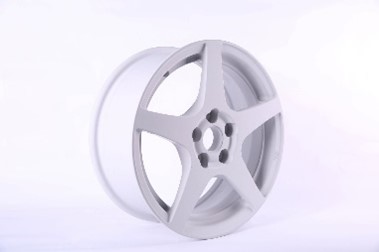
Spray paint:
Spray painting is the most common surface treatment process. It disperses the paint into uniform and fine droplets through a spray gun or a disc atomizer with the help of compressed air or centrifugal force, and applies it to the surface of the workpiece. The main purpose is to prevent corrosion and enrich the color.
Electrostatic spray:
Also called dusting. The spray gun sprays resin powder through the action of high-pressure air, and the powdery resin is charged by high-voltage electrostatic equipment near the nozzle. The resin is adsorbed by the workpiece with the opposite polarity, and when the powder reaches a certain thickness, the adsorption stops due to electrostatic repulsion. The powder is then melted by heating and solidified to form a hard film on the surface of the workpiece.
The workpiece can be obtained in various colors by spraying. A sufficient thickness of electrostatic spray treatment can obtain good weather resistance. Many outdoor aluminum profiles use electrostatic spraying to increase weather resistance.
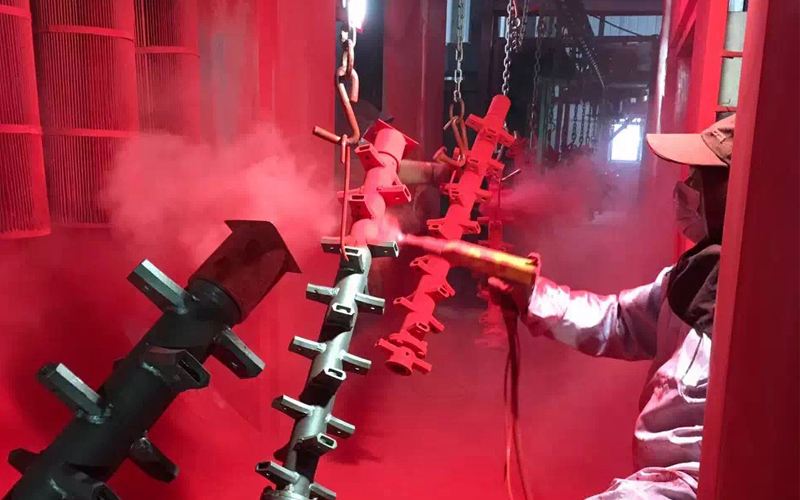
Electrophoretic Coating/ Electrophoretic Painting:
The implementation environment of electrophoretic coating is similar to that of electroplating, which requires the metal workpiece to be connected to the electrode and immersed in the solution. But the principle and solution composition are quite different. The active ingredients in the electrophoretic coating solution are mainly epoxy resins, paints, or other water-based coatings.
The workpiece is passed through an electric current to attract the suspended particles in the solution and deposit them on the surface of the substrate to form a protective film, the thickness of which can be controlled by current and time. The electrophoretic coating includes an anodic electrophoretic coating (the workpiece is connected to the anode) and a cathodic electrophoretic coating (the workpiece is connected to the cathode). Cathodic electrophoretic coating is mostly used in the industry. Although the final film is similar in properties to spray paint, its molecules are more tightly packed and the surface finish is high. The main function of electrophoresis is anticorrosion and surface decoration.
